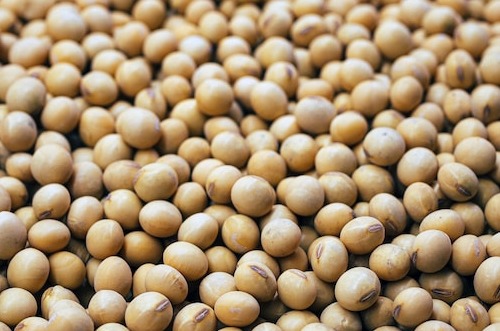W49 Soybean Update: EU Sees Threefold Increase in Soybean Production, Challenging Weather Impacts Brazil's Soybean Planting

EU Achieves Historic Growth in Soybean Production
The European Union's (EU) soybean production has tripled over the past decade, reaching 2.7 million metric tons (mmt) in 2023. However, this represents only 15% of the domestic consumption, which is 16 mmt annually, primarily used for animal feed. Despite suboptimal climatic conditions, 2023 marks a historic growth in soybean production in the EU, with areas expected to continue expanding. Notably, Germany has achieved its largest soybean crop, ranking eighth among producers. Despite these positive developments, the EU is actively working to reduce its dependency on protein imports from Brazil, Argentina, the United States (US), and Ukraine. Plant protein strategy initiatives were introduced to fulfill the EU's annual demand for vegetable proteins, totaling 27 mmt, with 93% allocated for animal feed and less than 1% for human consumption.
IMEA Confirms Crop Losses in Mato Grosso for 2023/24 Season
The Mato Grosso Institute of Agricultural Economics (IMEA) has confirmed crop losses in Mato Grosso, Brazil, due to hot weather and extended periods without rain. The latest forecast for the 2023/24 season in Mato Grosso predicts production of 42.13 mmt, reflecting a 3.78% decrease compared to the previous estimate. In some areas, a shortened soybean cycle was observed, potentially compromising the plant's productive potential. The projected soybean area for the region is 0.74% lower than the previous month's expectation, at 12.13 million hectares (ha). IMEA also reported a high percentage of replanting, a phenomenon confirmed by market agents in the area.
Brazil's Soybean Planting Progress Lags Amid Challenging Weather
As of November 30, Brazil's soybean planting for the 2023/24 season reached 85% of the estimated area, up from 74% in the previous week, but is slightly behind the 91% achieved in the same period in 2022. The world's largest producer and exporter of soybeans is experiencing challenging weather conditions, including excessive rains in the south and drought in the southwest. Consequently, soybean production is revised downward to 159.1 mmt, from 163.5 mmt forecasted on November 9 and significantly below the Oct-23 projection of 164.6 mmt.
Meanwhile, soybean sowing in the Rio Grande do Sul is facing delays, with slightly over 50% of the area sown. This is behind the progress made during the previous harvest, which had reached 70% and the five-year average of 75% of the projected area. Producers are concerned about the delay, fearing potential negative impacts on productivity. The delayed planting also poses challenges for implementing staggered planting.
Argentina Eyes Higher Production with Expanded Acreage
Argentina's soybean production for 2023/24 could surpass the current estimate of 50 mmt if weather conditions cooperate during the growing season. As of W48, 34.8% of soybeans in Argentina were sown, representing a weekly advance of 17.4%. In core production areas, soybean planting ranges from 50 to 60%, while Southern Argentina has 10 to 30% planted, and far Northern Argentina has not planted.
The Buenos Aires Grain Exchange has increased the estimated soybean acreage for the 2023/24 season by 200 thousand hectares (ha) to 17.3 million ha. This adjustment is due to farmers switching some of their originally intended early-planted corn and sunflowers to soybeans. With 70% of corn yet to be planted and the recent election, more hectares of corn and sunflowers may be switched to soybeans.




